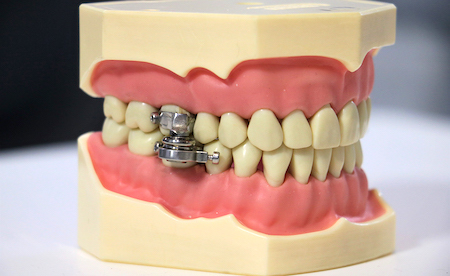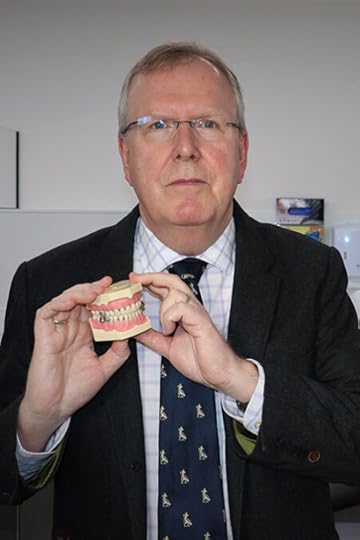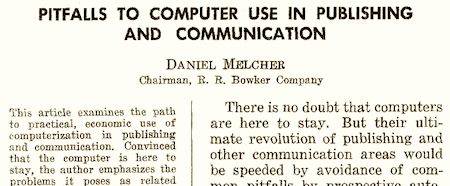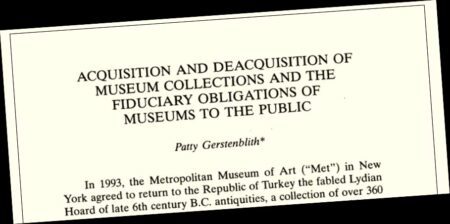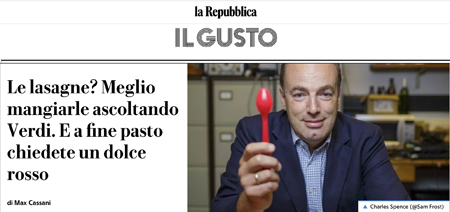Marc Abrahams's Blog, page 77
June 29, 2021
Altered Pinna [study]
Unlike dogs, cats, rabbits, bats, donkeys, zebras, gerbils and very many other mammals, most humans have great difficulty in independently orienting their outer ears ( pinnae ) towards sounds of interest. But what if we could?
This study demonstrates that by opening and closing the human pinna, we can change the direction of sound perceived by humans. Each ear was independently transformed into a 100% open, 50% open, and 100% closed state, and all 9 combinations of these ear transformations were tested to evaluate the perceived direction of the sound output from 7 speakers placed 180 degrees around the subject. We demonstrate that by deforming the pinna, we could change the perception of the direction of sound, or make it illusory.
See : Altered pinna: exploring shape change of pinna for perception and illusion of sound direction change (ISWC ’19: Proceedings of the 23rd International Symposium on Wearable Computers, September 2019 Pages 220–224). A full copy of which may be found here.
(Research research by Martin Gardiner)

June 27, 2021
Jaw-Locking Tooth Locks as a Weight-Loss Panacea
By locking fat people’s upper and lower jaws together with a tooth-to-tooth metal lock, a team from the Unviersity of Otago and from Leeds (UK), intend to slim those fat people down. So suggests a June 28, 2021 press release from the University of Otago. The press release begins:
“University of Otago and UK researchers have developed a world-first weight-loss device to help fight the global obesity epidemic.
“DentalSlim Diet Control is an intra-oral device fitted by a dental professional to the upper and lower back teeth. It uses magnetic devices with unique custom-manufactured locking bolts. It allows the wearer to open their mouths only about 2mm, restricting them to a liquid diet, but it allows free speech and doesn’t restrict breathing.”
The release includes this photo of Lead researcher (and University of Otago Health Sciences Pro-Vice-Chancellor) Professor Paul Brunton:
The researchers published a study, called “An intraoral device for weight loss: initial clinical findings,” in the British Dental Journal.
Locked Jaws, not LockjawAlthough the method consists of locking a person’s jaws together, it should not be confused with the medical condition known as “lockjaw”. That medical condition is also called “tetanus.”

Podcast Episode #1074: “Vibrate That Earthworm”
The Ig Nobel Prizes honor achievements that make people LAUGH, then THINK.
In the Ig Informal Lectures, some days after the ceremony, the new Ig Nobel Prize winners attempt to explain what they did, and why they did it.
In Podcast Episode #1074, Marc Abrahams presents the 2020 Ig Nobel Prize winner for Physics was awarded to Ivan Maksymov and Andriy Pototsky. They received the prize for determining, experimentally, what happens to the shape of a living earthworm when one vibrates the earthworm at high frequency.
The study:
“Excitation of Faraday-like body waves in vibrated living earthworms,” Ivan S. Maksymov and Andriy Pototsky, bioRxiv 10.1101/868521, December 8, 2019.
Seth Gliksman, Production Assistant
Available on Spotify, Apple Podcasts, Overcast, Google Podcasts, AntennaPod, BeyondPod and elsewhere!

June 24, 2021
Computer Usefulness in Publishing, 1969 and Now
In 1969 a publishing executive mused about whether and how computers had helped his industry:
“Pitfalls to Computer Use in Publishing and Communication,” Daniel Melcher, Journal of Business Communication, vol. 6, no. 2, Winter 1969, pp. 47-51. The author, chairman of the R.R. Bowker Company, says:
Most large publishers now have computers; many small ones use computers. Yet very few report net savings resulting from conversion to computer, and most went through agonies in the conversion process. All hope for tangible economies in the future. But the $5 million companies seem to expect economies when they reach $10 million — and the $10 million companies when they reach $20 million, and so on. [continued below the image]
Also, the economies of typesetting have benefited but modestly from computerization so far. Recently, for example, some systems analysts wrote that they had found a way to cut the cost of typesetting by 80 percent. Upon reading the small type it was revealed that the promised composition savings depended on getting the author to do the work of the compositor — and on getting him not to make corrections on proof. Any publisher who can achieve those things can make spectacular savings, with or without a computer.

June 22, 2021
Some Physicists Love The Cat Metaphor

Erwin Schroedinger, the cat-metaphor man
Erwin Schroedinger’s playful metaphor about a cat that is simultaneously dead and alive (until the moment someone looks at it) lives on, in kittens, in occasional physics papers. This new paper, for example, deploys both a CAT STATE and a KITTEN STATE:
“Photon added cat state: phase space structure and statistics,” Arman, Gargi Tyagi, Prasanta K. Panigrahi, Optics Letters, vol. 46, no. 5, 2021, p 1177.
The authors, at the Indian Institute of Science Education and Research Kolkata, and a Amity University, India, write:
“The phase space structure and statistics of the photon added cat state are studied in the state’s general form. Photon addition leads to a π phase shift at the origin in the observed phase space interference of the Wigner function, which may serve as an error syndrome detector. The maxima and minima of the sub-Planck tiles in the phase space of the kitten state are interchanged after photon addition, leading to their orthogonality. Interestingly, photon addition to the Yurke-Stoler state characterized by Poissonian statistics leads to a sub-Poissonian distribution, which may find potential use in quantum noise reduction.”

June 21, 2021
Word of the week : “Deacquire”
It might be commonly said that we ‘acquire’ knowledge, ‘acquire’ a smartphone, or ‘acquire’ a verruca – in less common parlance is the word ‘deacquire’. It’s traditionally used though, for reasons that are not altogether clear, when referring to museums and their collections.
In the same way as a museum might, for example, ‘acquire’ The Elgin Marbles – it’s also possible to ‘deacquire’ them (i.e. give them back).
Usage example : Acquisition and Deacquisition of Museum Collections and the Fiduciary Obligations of Museums to the Public (11 Cardozo J. Int’l & Comp. L. 409 (2003-2004) ) by P Gerstenblith.
BONUS [fun activity] Make up phrases which use the word deacquire. (example: “I’m thinking of deacquiring my old lawnmower”)

June 20, 2021
Podcast Episode #1073: “Smelly People in the Office”
In this Podcast Episode #1073, Marc Abrahams shows some unfamiliar research studies to fluid dynamicist Nicole Sharp. Dramatic readings and reactions ensue.
Remember, our Patreon donors, on most levels, get access to each podcast episode before it is made public.
Nicole Sharp encounters:
“Smell Organization: Bodies and Corporeal Porosity in Office Work,” Kathleen Riach and Samantha Warren, Human Relations, May 2015 vol. 68 no. 5 789-809.
Seth Gliksman, Production Assistant
Available on Spotify, Apple Podcasts, Overcast, Google Podcasts, AntennaPod, BeyondPod and elsewhere!

Chip Crispness Experiment, then Further Food Research Adventures
“It all started in 2008, when Professor Charles Spence received the Ig Nobel Prize for his “sonic chip” experiment. Nothing to do with the Nobel Prize, but a recognition for the strangest and most absurd researches, which first make you laugh and then make you think. And in fact the study on the Pringles made the scientific community reflect a lot, especially food and wine…”
So begins the report in La Repubblica, about the many and varied food research adventures of Professor Charles Spence.

June 15, 2021
Do Beer Mats Make Bad Frisbees?
Beer mats do make bad Frisbees, this study implies and explains:
“Beer Mats Make Bad Frisbees,” Johann Ostmeyer, Christoph Schürmann, Carsten Urbach, arXiv 2106.08238, 2021. (Thanks to Mason Porter for bringing this to our attention.) the authors, at the University of Bonn and at the Max-Planck-Institut für Radioastronomie, Germany, explain:
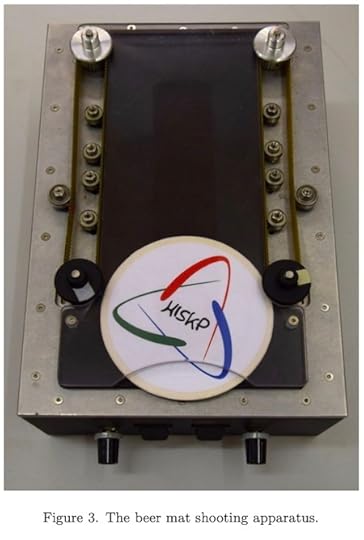
In this article we show why flying and rotating beer mats, CDs, or other flat disks will eventually flip in the air and end up flying with backspin, thus, making them unusable as frisbees. The crucial effect responsible for the flipping is found to be the lift attacking not in the center of mass but slightly offset to the forward edge. This induces a torque leading to a precession towards backspin orientation. An effective theory is developed providing an approximate solution for the disk’s trajectory with a minimal set of parameters. Our theoretical results are confronted with experimental results obtained using a beer mat shooting apparatus and a high speed camera. Very good agreement is found.

Intimate Knowledge of the Ostrich Whisperer?
In this video, a person called “the Ostrich Whisperer” appears to display an intimate knowledge of how ostriches behave towards humans:
One can wonder many things about the Ostrich Whisperer’s knowledge.
One can wonder how it compares with the knowledge reported in the study “Courtship Behaviour of Ostriches (Struthio camelus) Towards Humans Under Farming Conditions in Britain,” Norma E. Bubier, Charles G.M. Paxton, P. Bowers, D.C. Deeming, British Poultry Science, vol. 39, no. 4, September 1998, pp. 477-481.
Knowledgable readers of this blog know that that study’s authors were awarded the 2002 Ig Nobel Prize in biology.
(By the way, there seems to be more than one person who is called “the ostrich whisperer”.)

Marc Abrahams's Blog
- Marc Abrahams's profile
- 14 followers


